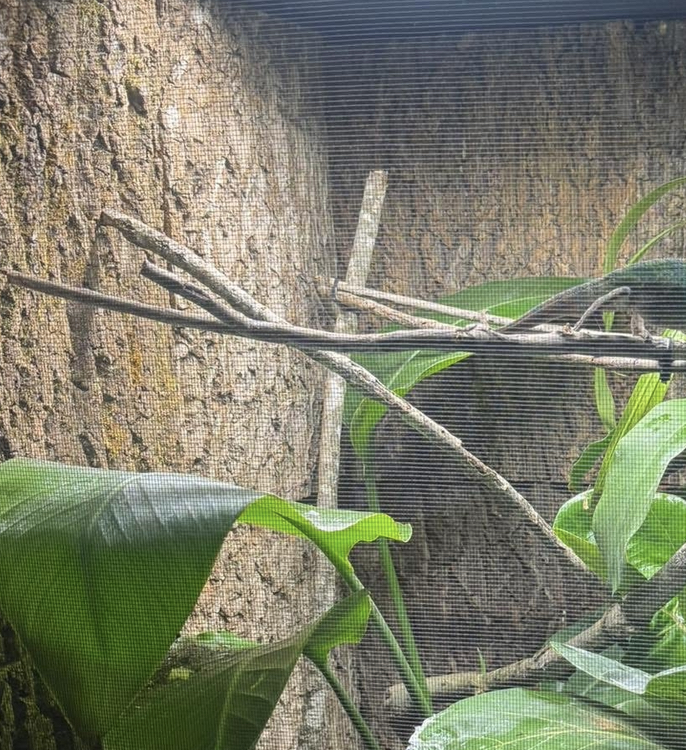Myth 37: “The Walls Of a Cage Are Good To Be Covered By Bark Or Any Other Material”
A Harmful Misconception: Chameleons are not Cavemen

Many chameleon keepers—often acting on personal aesthetic preferences or advice from non-experts—choose to cover the walls of their chameleon enclosures with bark, wood panels, or imitation tree textures. They believe this mimics a "natural" environment or provides climbing surfaces.
But this practice is fundamentally flawed.
The Reality: Chameleons Are Not Cave Dwellers
Chameleons are arboreal creatures that thrive in bright, airy, and well-ventilated canopies. Their natural habitat is open, light-filled, and rich in vertical and horizontal and diagonal climbing structures like branches and vines—not enclosed, dark, bark-lined spaces.
Covering cage walls with bark or similar materials creates an environment that is:

Unnatural – It simulates a cave or forest floor, not a canopy.
Too dark – Reduces light exposure, which is vital for their health and mood.
Poorly ventilated – Traps moisture and air, leading to stagnant conditions.
A breeding ground for bacteria and fungi – Moist bark and poor airflow encourage microbial growth, risking infections, source of extreme contamination for the cage itself but also spreading germs in the appartmens, thus exposing humans to big concentrations of fungal and bacterial spores, causing allergic reactions, respiratory infections etc..
Hard to clean – Bark and textured panels trap dirt and waste.
A source of debris and dust – These can be ingested or inhaled, causing impaction, respiratory issues, or eye infections.
Hygiene and Health First
The supposed benefit of giving chameleons a surface to crawl on is not worth the risks. Chameleons prefer climbing on branches and plants—not vertical walls. Even if they can crawl on bark, it's not their natural or preferred mode of movement.
Exception?
Such wall coverings might be acceptable only in very large enclosures with excellent lighting and ventilation—but even then, their benefit to the chameleon is questionable.
Bottom Line
Who promote bark-covered walls are mistaken. Prioritizing aesthetics or layman advice over the actual biological and environmental needs of chameleons leads to long-term harm.
Our goal should always be to simulate the bright, open canopy they evolved in—not a cave.
